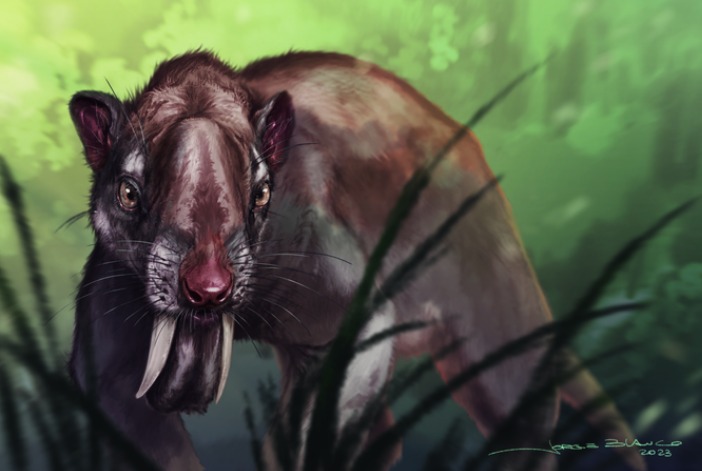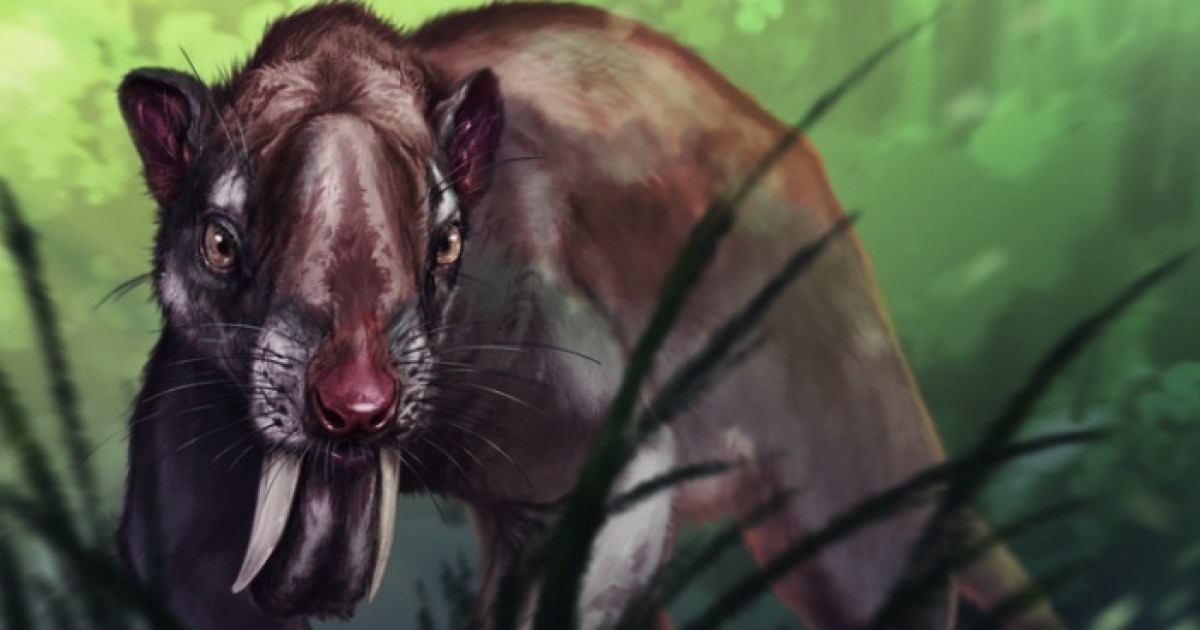There was a time in South America about 3 million years ago when a strange carnivorous marsupial named Thylacosmilus lived, with large teeth that made it look like Saber-toothed tiger.
He was a member of the Sparassodonta, a group of highly carnivorous mammals related to modern marsupials. Although sparasodont species varied considerably in size, Thilacosmilus it may have weighed up to 100 kg (220 lb), the vast majority resembled placental predators such as cats and dogs in that they had forward-facing eyes and presumably full three-dimensional vision.
For this reason, recent studies have tried to shed light on the great mystery: how did he manage to hunt with his eyes so far apart?
Carnivore skulls often have forward-facing eye sockets or orbits that help provide stereoscopic (3D) vision, a useful adaptation for assessing prey’s position before jumping. Scientists from the American Museum of Natural History and the Argentine Institute of Nivology, Glaciology and Environmental Sciences in Mendoza, Argentina, have studied whether there was a “saber-toothed marsupial” Thilacosmylus atrox could be seen in 3D. Their results are published today in the journal Communication biology.
“I can’t understand the organization of the skull in Thilacosmilus without first encountering these huge fangs,” said lead author Charlene Gaillard, a doctoral student at the Argentine Institute of Nivology, Glaciology and Environmental Sciences (INAGLIA). “They weren’t just big; They were constantly growing, to the point that the roots of the fangs continued over their skulls. This had consequences, one of which was that there was no room for orbits in the usual predatory position in front of the face.”
Gaillard used computed tomography and virtual 3D reconstructions to assess the organization of orbits in various fossils and modern mammals. She was able to determine how the visual system Thilacosmilus it could be compared to those of other carnivores or other mammals in general. Although some modern predators exhibit low orbital convergence, Thilacosmilus in this respect it was extreme: it had an orbital convergence value of only 35 degrees, compared to a typical predator such as a cat’s convergence of about 65 degrees.
However, good stereoscopic vision also depends on the degree of frontation, which is a measure of how well the eyeballs are located within the orbits. “Thilacosmilus he was able to compensate for the position of the eyes on the sides of the head by slightly protruding their eye sockets and orienting them almost vertically to maximize the overlap of the visual fields,” said co-author Analia M. Forasiepi, also from INAGLIA. and researcher at CONICET, the Argentine agency for science and research. “While its orbits were not favorable for 3D vision, it could achieve approximately 70 percent visual field overlap, which is obviously enough to make it a successful active predator.”

“Compensation seems to be the key to understanding how the skull Thilacosmilussaid study co-author Ross D.E. McPhee, senior curator at the American Museum of Natural History. “Indeed, the pattern of canine growth during early skull development shifted the orbits away from the front of the face, leading to the outcome we see in adult skulls. The strange orientation of the orbits in Thilacosmilus in fact, it represents a morphological compromise between the main function of the skull, which is to support and protect the brain and sense organs, and a secondary function, unique to this species, which was to provide enough space for the development of huge fangs.
“Looking for elegant adaptive explanations in evolutionary biology is fun, but largely pointless. One thing is clear: Thilacosmilus he was no freak of nature, but in his time and place he seemed to have succeeded admirably in surviving as an ambush predator. We may see this as an anomaly because it doesn’t fit into our preconceived categories of what real carnivorous mammals should look like, but evolution dictates its own rules,” Dr. Forasiepi added.
Source: Digital Trends
I am Garth Carter and I work at Gadget Onus. I have specialized in writing for the Hot News section, focusing on topics that are trending and highly relevant to readers. My passion is to present news stories accurately, in an engaging manner that captures the attention of my audience.









